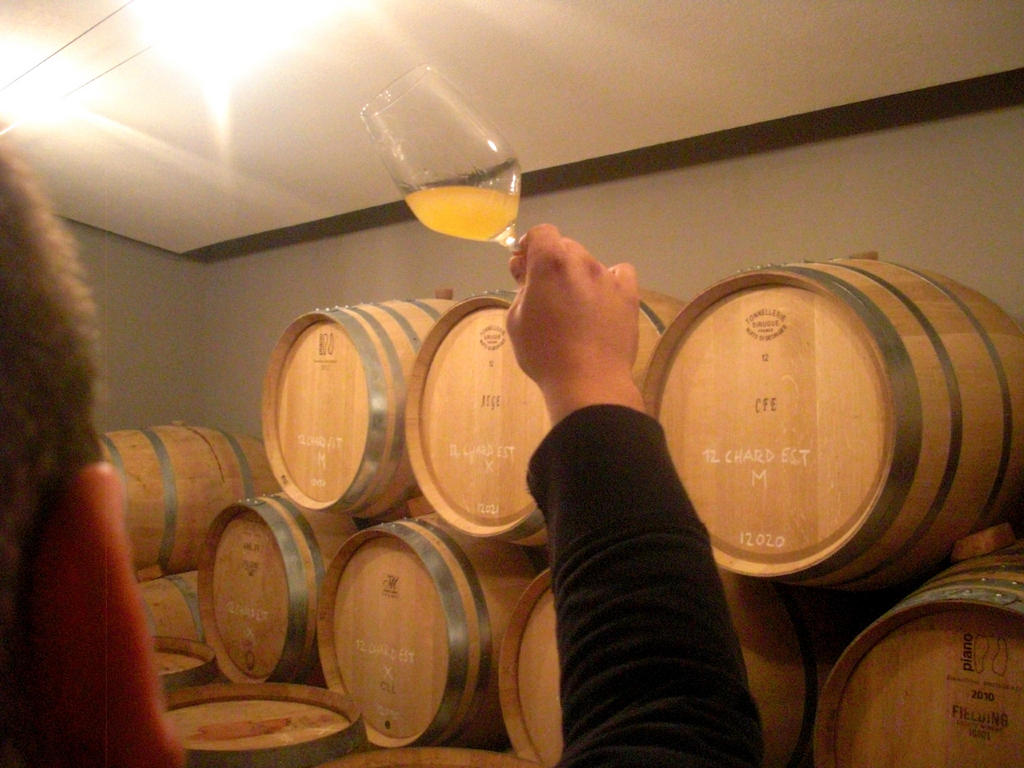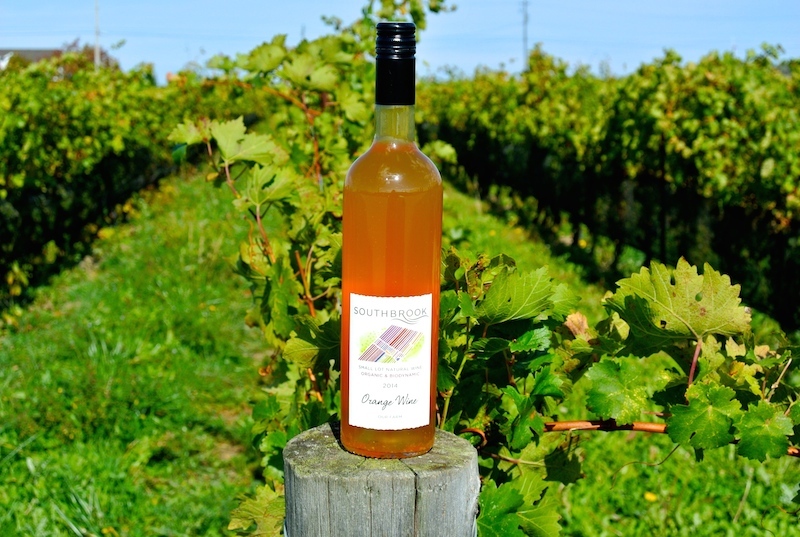
By Rick VanSickle
The doors have swung wide open for the production of “orange” wines in Ontario with the government finally signing off on a new Vintners Quality Alliance category for skin-fermented white wines.
The change is a bold move for VQA and has been in the works for over a year. The process for seeking the new skin-fermented white wine category at VQA came from a request from Southbrook Vineyards’ winemaker Ann Sperling, who was already producing a non-VQA bio-dynamic, organic and natural orange wine from skin-fermented Vidal grapes and finding success.
Southbrook put together a request and VQA assembled a “technical committee” to arrive at the new rules, which have now been adopted by VQA.
Just last winter Sperling cautioned that a timeline for the new skin-fermented white wine category being approved wouldn’t likely take place until next fall. After VQA board approval it needed to be signed off by the Ontario minister responsible for VQA because it’s a new category of wine.
Sperling says she tried to have it included as a sub-set in the white wine category, as is what happened in B.C., but the VQA board thought a entirely new category was a better route to go.
As for seeing her efforts pay off, Sperling said last year: “It’s wonderful. At least it broadens the spectrum of what VQA represents.”
The challenge ahead, she said, is educating the VQA tasting panel, made up of LCBO product consultants, on orange wines and the often cloudy and hazy look to these wines when bottled on the lees or made unfiltered and unfined. She hopes to be a part of the industry panel that will educate consultants on what orange wines around the world look and taste like.

VQA executive director Laurie Macdonald agreed, saying that the next step after approval is seeking industry help in training the tasting panel on what to look for with these new-fangled wines.
Macdonald confirmed today that the new rules take effect July 1 and VQA started accepting submissions for evaluation yesterday.
“The process evolves as the wine world evolves,” said Macdonald last winter. “Wine isn’t static.”
Macdonald was aware of at least a dozen wineries making skin-fermented white wines in Ontario but expects the category to expand quickly with VQA approval.

One Ontario winemaker ready to seek approval under anticipated new rules is Vineland Estate’s Brian Schmidt, above. He made his first orange wine from the 2016 vintage, a skin-fermented Chardonnay Musque that I tasted just after it was bottled. It was delicious.
Macdonald said it was a learning curve to draw up regulations for orange wines because VQA had to start from scratch with no similar regulatory rules in place that she could find anywhere in the world. Only South Africa has any kind of “wine standard” for skin-fermented wines, but Macdonald could not find regulatory specific rules for the category.
Here is what VQA and the wine industry proposed, and is now approved:
Skin Fermented White Wine
- The wine shall be a table wine or effervescent wine produced exclusively from fresh grapes, of a white or pink variety (all permitted vinifera and hybrid grapes).
• 100% of the grapes used shall be macerated and fermented on their skins for a minimum of 10 days. Fermentation shall occur when the skins are present.
• The wine shall have an actual alcoholic content not less than 7.0% and not greater than 14.9% by volume.
• Turbidity requirements set out in VQA chemical analysis guidelines shall not apply to wines in this category labelled with “Bottled with Lees”
Principal Display Panel labelling:
- VQA — Geographical indication — VQ
• Skin Fermented White
Other required labelling (anywhere on container):
- Vintage Year
• Grape variety or varieties and/or proprietary name
Conditions:
- Skin Fermented White shall be declared in a type size at least as large as the varietal declaration on the principal display panel and not less than 2 mm based on the smallest letter. • Nothing shall be written between the grape variety name and Skin Fermented White.
• Where no grape varieties are declared on the principal display panel, the term Skin Fermented White shall be declared in a type size not less than 3.2 mm based on the smallest letter.
• The terms Amber Wine, Orange Wine or Vin Orange may appear at the producer’s discretion. • If the wine is bottled with its lees, the label shall declare “Bottled with lees”
• A wine produced from one or more vitis vinifera grape varieties that does not list the grape varieties on the label or only references vitis vinifera varieties on the label shall not contain wine produced from hybrid grape varieties. A wine produced from one or more hybrid grape varieties listed that is labelled as a varietal wine may contain wine produced from vitis vinifera grape varieties. Varietal wines containing hybrid grapes shall only be entitled to a provincial designation.
The move to VQA approval for orange wines is important to wineries because it opens the door to more retail opportunities, such as the LCBO, and also from a monetary standpoint — non-VQA wines earn the winery approximately 34% less in revenue.
As for seeing her efforts pay off, Sperling said last winter: “It’s wonderful. At least it broadens the spectrum of what VQA represents.”
Other Ontario wineries making
or have made orange wines in include:

- Stanners Vineyard Pinot Gris (Prince Edward County)
• Trail Estate Winery Riesling and Sauvignon Blanc (Prince Edward County), which made a three-bottle set of Rieslings and a Sauvignon Blanc with varying amounts of skin-contact
• Fielding Estate Viognier (Niagara), the first in Ontario to make an orange wine
• Pearl Morissette had an orange wine made from Riesling and Viognier and was aging it in amphora (not sure where he’s at with that)
• Jay Johnston, former winemaker at Flat Rock (now at Hidden Bench), has experimented with full skin-fermented Gewurztraminer, but it has not been released commercially
• Ravine winemaker Marty Werner has jumped on board with a skin-fermented Viognier (Submerged cap for 6 weeks)
• Jeff Hundertmark, former winemaker at Stony Ridge, now moving to B.C., made a full skin-fermented Riesling but wasn’t certain it would be bottled as a standalone wine at this point - And, of course, the popular Southbrook Orange Wine, which is into its second vintage.





We can walk to Little Oak wine bar and choose from a couple Orange wines. The Southbrook has been there for 8 months and the Pearl
Morissette has been around in limited quantities.
Oh. I’m in Nova Scotia.